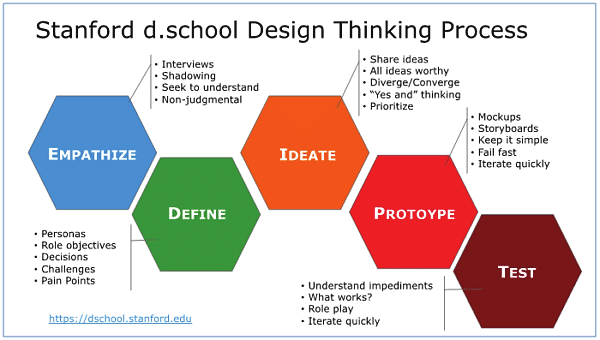It's often difficult for clients to say what they actually mean - Use Design Thinking
It is not uncommon that, when you are working on a project and the client appears to keep changing their minds.
You design something and it's not what the client had in mind, while you did accentually what they said they wanted.
These moments could give you head-scratching moments as designer.
The other day we were working on a website project, and the topic came up that the text was too long. We mentioned that by removing text, it would effect the message to the visitors to the website and eventually effect conversion rate.
The client was determined, and we went back and had the copywriters figure out ways how to keep the message consistent to the product and the function of the website, while reducing the amount of text and adjusted the design.
When we presented the concept to the client, they weren't pleased and mentioned there wasn't much of a difference as previously design and I noticed one crucial thing as they mentioned, it takes too long when scrolling before the visitor of the website arrives at a particular section of the website.
Since we only had a few days remaining and we couldn't create various options to choose from to check if we where in the right track. We had to make it happen.
I realized that “it takes too long for scroll to that particular part of the website” actually means that the particular section that the client has high interests in, was on the wrong location and had to be moved.
We presented the design and it was actually as the client had in mind. The design got approved.
As a designer, it is important to empathize and get the clients perspective, as described in the “design thinking process” (https://en.wikipedia.org/wiki/Design_thinking)

Empathize. Define. Ideate, Prototype. Test.
Those are the five steps of design thinking. Empathize and define of this process is often overlooked as we are eager to start with the work (Ideate) and skipping the two fundamental steps; Empathize, and Define.
As Lina says;
If we don't first empathize with the client, and their end users, and understand the underlying problem (ie, what is really causing our client's “problem”), we can't move forward to find a suitable solution ..
Or, rather, we can — and in fact we do it all the time. But we run a high risk of starting to ideate about the wrong problem, if we speed through this phase too quickly, or skip it entirely -as in the example above that we went on trying to reduce the text.
The second step is just as important. Define. Empathizing is the backdrop, but the definition needs to be so clear and unambiguous that when you walk out of a meeting with a client, you and the client have the exact same picture of what the problem really is.
Note that you do not yet have to agree on the best solution. That’s when your popcorn brain will do its magic and you’ll work together with the client to agree on a solution, after coming up with a few and prototyping some of them.
Defining and agreeing upon what problem you are actually solving is a key step — where, sadly, too many endeavors fail. Therefore, if you want to sharpen your competitive edge, learn to listen. Shut your mouth, and then listen some more. Ask questions. And more questions. Draw, sketch, do anything that brings you as close as possible to actually reading your client's mind.
Then, hopefully, your project will result in your clients exclaiming, “This is exactly what I imagined! You are a mind reader!”
I recommend to watch Tim Brown's TED talk (2009):
https://www.youtube.com/watch?v=UAinLaT42xY
Ask anything you need to bring you closer to understanding your client, their end users and underlying problem and you will have a great start!
この記事が気に入ったらサポートをしてみませんか?
